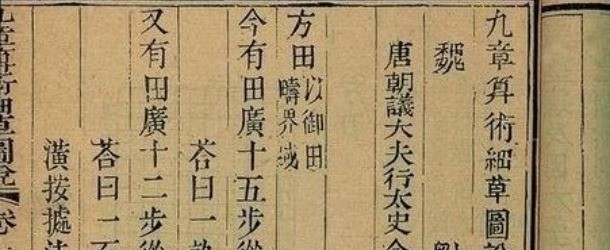Light-Based Quantum Computer Jiŭzhāng Exceeds Fastest Classical Supercomputers

(ScientificAmerican) For the first time, a quantum computer made from photons—particles of light—has outperformed even the fastest classical supercomputers.
Physicists led by Chao-Yang Lu and Jian-Wei Pan of the University of Science and Technology of China (USTC) in Shanghai performed a technique called Gaussian boson sampling with their quantum computer, named Jiŭzhāng. (Image accompanying this article is from the original Jiŭzhāng mathematical text).
The result, reported in the journal Science, was 76 detected photons—far above and beyond the previous record of five detected photons and the capabilities of classical supercomputers.
Unlike a traditional computer built from silicon processors, Jiŭzhāng is an elaborate tabletop setup of lasers, mirrors, prisms and photon detectors. It is not a universal computer that could one day send e-mails or store files, but it does demonstrate the potential of quantum computing.
“It was not obvious that this was going to happen,” says Scott Aaronson, a theoretical computer scientist now at the University of Texas at Austin who along with then-student Alex Arkhipov first outlined the basics of boson sampling in 2011.
This latest demonstration of quantum computing’s potential from the USTC group is critical because it differs dramatically from Google’s approach. Sycamore uses superconducting loops of metal to form qubits; in Jiŭzhāng, the photons themselves are the qubits.
The USTC setup is dauntingly complicated. Jiŭzhāng begins with a laser that is split so it strikes 25 crystals made of potassium titanyl phosphate. After each crystal is hit, it reliably spits out two photons in opposite directions. The photons are then sent through 100 inputs, where they race through a track made of 300 prisms and 75 mirrors. Finally, the photons land in 100 slots where they are detected. Averaging over 200 seconds of runs, the USTC group detected about 43 photons per run. But in one run, they observed 76 photons—more than enough to justify their quantum primacy claim.
It is difficult to estimate just how much time would be needed for a supercomputer to solve a distribution with 76 detected photons—in large part because it is not exactly feasible to spend 2.5 billion years running a supercomputer to directly check it. Instead, the researchers extrapolate from the time it takes to classically calculate for smaller numbers of detected photons.
(The USTC quantum computer takes its name, Jiŭzhāng, from Jiŭzhāng Suànshù, or “The Nine Chapters on the Mathematical Art,” an ancient Chinese text with an impact comparable to Euclid’s Elements.)



















